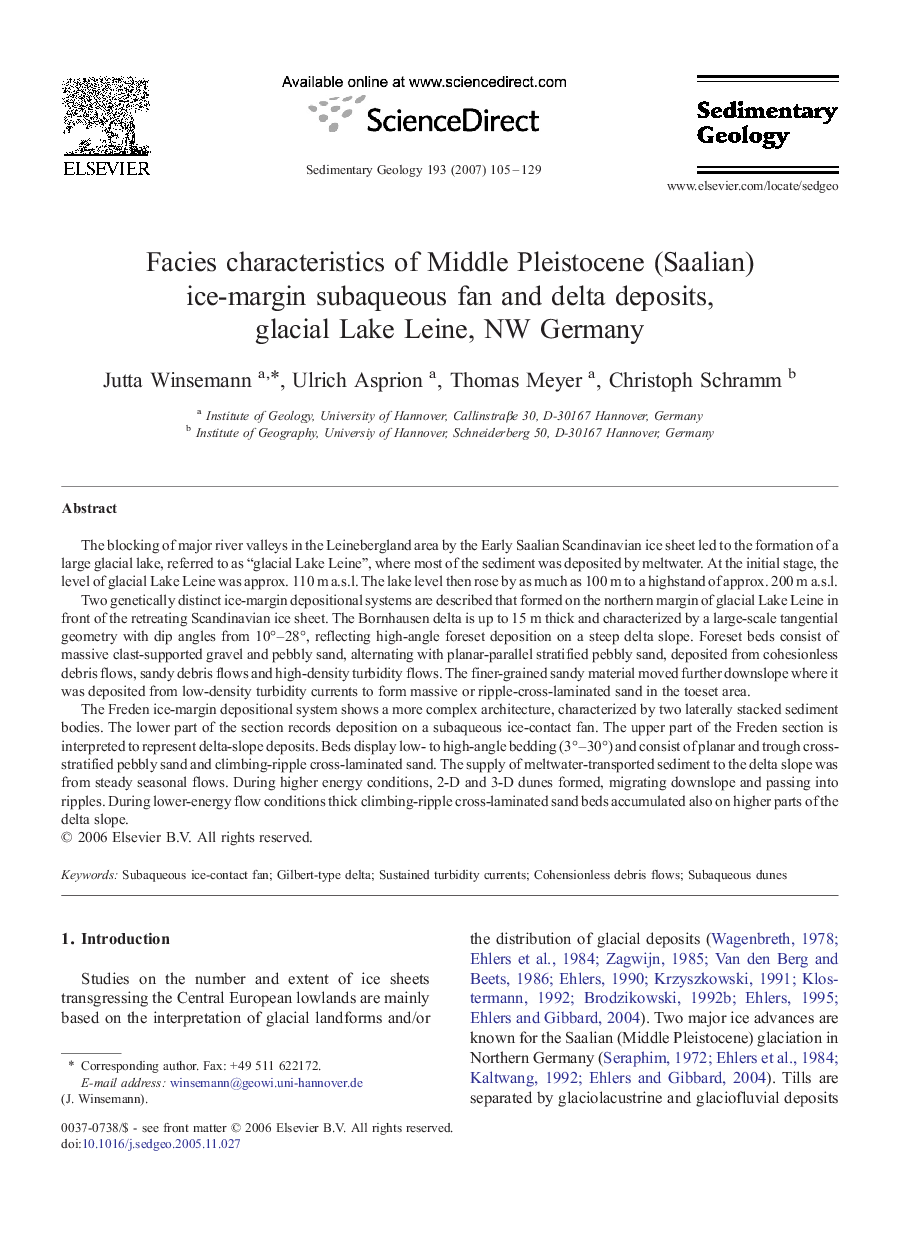| کد مقاله | کد نشریه | سال انتشار | مقاله انگلیسی | نسخه تمام متن |
|---|---|---|---|---|
| 4690856 | 1636178 | 2007 | 25 صفحه PDF | دانلود رایگان |

The blocking of major river valleys in the Leinebergland area by the Early Saalian Scandinavian ice sheet led to the formation of a large glacial lake, referred to as “glacial Lake Leine”, where most of the sediment was deposited by meltwater. At the initial stage, the level of glacial Lake Leine was approx. 110 m a.s.l. The lake level then rose by as much as 100 m to a highstand of approx. 200 m a.s.l.Two genetically distinct ice-margin depositional systems are described that formed on the northern margin of glacial Lake Leine in front of the retreating Scandinavian ice sheet. The Bornhausen delta is up to 15 m thick and characterized by a large-scale tangential geometry with dip angles from 10°–28°, reflecting high-angle foreset deposition on a steep delta slope. Foreset beds consist of massive clast-supported gravel and pebbly sand, alternating with planar-parallel stratified pebbly sand, deposited from cohesionless debris flows, sandy debris flows and high-density turbidity flows. The finer-grained sandy material moved further downslope where it was deposited from low-density turbidity currents to form massive or ripple-cross-laminated sand in the toeset area.The Freden ice-margin depositional system shows a more complex architecture, characterized by two laterally stacked sediment bodies. The lower part of the section records deposition on a subaqueous ice-contact fan. The upper part of the Freden section is interpreted to represent delta-slope deposits. Beds display low- to high-angle bedding (3°–30°) and consist of planar and trough cross-stratified pebbly sand and climbing-ripple cross-laminated sand. The supply of meltwater-transported sediment to the delta slope was from steady seasonal flows. During higher energy conditions, 2-D and 3-D dunes formed, migrating downslope and passing into ripples. During lower-energy flow conditions thick climbing-ripple cross-laminated sand beds accumulated also on higher parts of the delta slope.
Journal: Sedimentary Geology - Volume 193, Issues 1–4, 1 January 2007, Pages 105–129